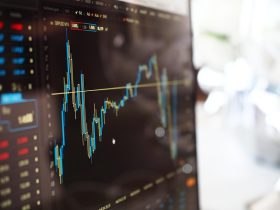In this article, we’ll talk about Augmented reality, Blockchain technology, and Remote working. All are hot topics that affect the human resources field. We’ll also touch on employee wellness management. Read on to discover how these emerging technologies and trends like ADP Canada can help you better manage your workforce. We hope you enjoy it! Stay tuned for more articles like this!
Employee wellness management
Whether it is health insurance, flexible working arrangements, or a family-friendly challenge, employee wellness is trending stuff in human resources. However, the concept of a healthy workplace extends beyond physical health, and companies must adapt their approach to their employees’ needs. By creating programs to improve the health of employees and their families, companies can improve the quality of life of their employees, as well as increase their productivity and retention rates.
The focus of workplace wellness should be on a robust virtual wellness program to cater to a growing remote workforce. A company will need to examine critical competencies and explore virtual learning and engagement tools to improve employee health and productivity. Another trending topic in 2020 is mental health. With a third of workers in the Asia-Pacific reporting an increased burnout rate, more attention needs to be paid to this issue than ever.
Augmented reality
Augmented reality for human resources is a new way to deliver information and showcase job candidates’ talents. In fact, an employee’s resume could even contain a QR code that will take the recruiter to a simulation of their job duties. Such technology is fast becoming the future of training, as it combines computer vision and interaction to create smart solutions that help the organization achieve its goals. For example, it could help determine if an employee is suited for the job and can also help identify trends.
In industries where the skills gap is a huge issue, AR can help employees perform high-skilled tasks. For example, Wearable AR devices could help service technicians locate parts and identify broken machines. They could also plot processes in advance but still make spur-of-the-moment adjustments in the field. Moreover, augmented reality could help an employee with a technical question connect to a subject matter expert via a live stream and a photo.
Blockchain technology
There are numerous potential applications of Blockchain technology in human resources. For example, payroll is a significant expense, and the procedure employees value most. However, many human activities can be replaced by smart contracts. For instance, global firms can benefit from blockchain solutions for cross-border payroll. Blockchain will automatically sift through exchange rates and talk to intermediaries to make payroll payments. It also has many other potential applications. This article will discuss some of the most common cases for HR blockchain implementation.
First of all, a blockchain is a digital ledger of all transactions. This ledger is replicated across many computers, making it very difficult to change the data and cheat the system. Check how much does it cost to buy ethereum? In a recent Gartner report, we discussed the benefits of Blockchain for HR and looked at how blockchain can enhance current practices. Blockchain utilizes concepts such as immutability and encryption to ensure security. Every completed transaction is cryptographically signed, timestamped, and sequentially added. Tokens can represent a variety of different assets.
Remote working
It’s no secret that remote working has become increasingly popular with employees across the globe. Twitter, Google, and Microsoft all recently announced that most of their employees can now work from home permanently. And Facebook has joined the fray, permanently extending remote working to all employees by 2021. In fact, up to 50% of the workforce could work from outside the company’s physical office in five to ten years.
However, employers and employees must ensure that the shift from on-site to remote work is beneficial for both parties. This means establishing metrics to assess employees’ performance and ensuring that the necessary actions are taken when there are concerns about employee performance. And of course, HR needs to regulate work hours, as well as ensure that the remote team can keep a good Internet connection. Similarly, the organization should consider power availability during major weather events.







